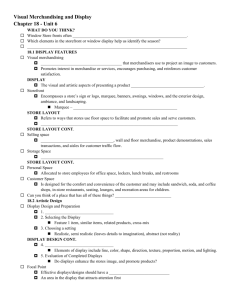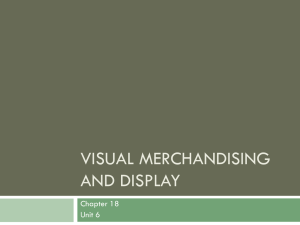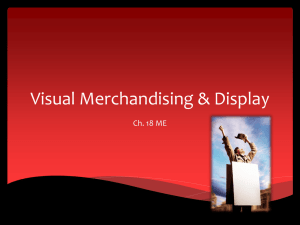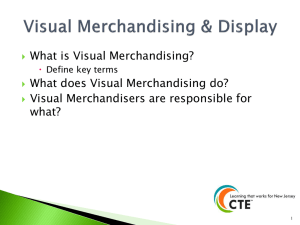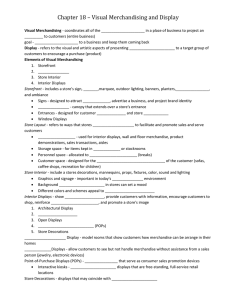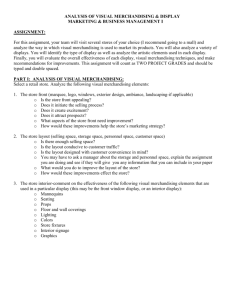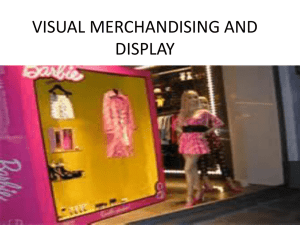Visual Merchandising & Display
advertisement
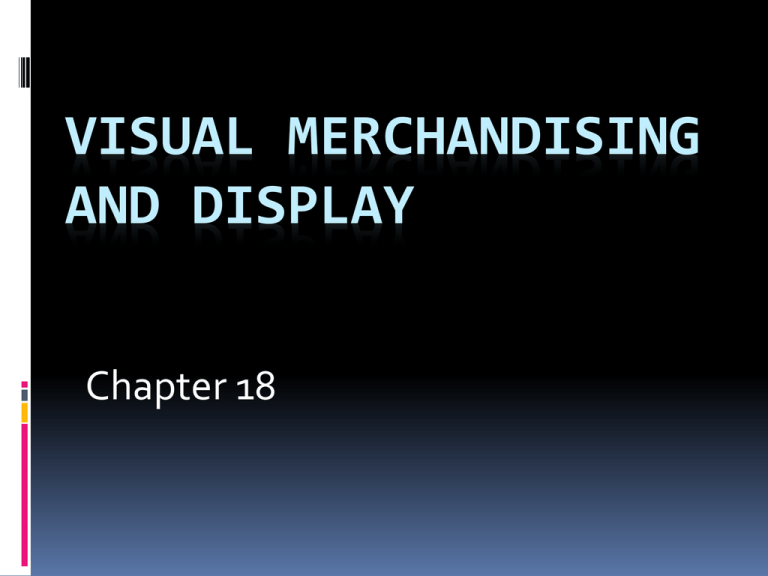
VISUAL MERCHANDISING AND DISPLAY Chapter 18 Visual Merchandising Refers to the organization of all physical elements in a place of business so that it projects the right image to its customers. Display Refers to the visual and artistic aspects of presenting a product to a target group of customers. Whereas, visual merchandising involves the visual and artistic aspects of the entire business environment. Elements of Visual Merchandising Visual merchandising is used to make a store and its merchandise SO attractive that the customer will enjoy the shopping experience and want to return. This is done through the use of these elements: storefront store layout store interior interior displays Storefront The total exterior of a business. This includes the entranceways, display windows, and the building itself, etc. A well designed storefront can project an appropriate image, for example…discount or expensive, conservative or trendy. Marquee: Is the sign that is used to display the store’s name. This is one of the first things customers see, so it is very important in attracting customers. Signs Entrances : enter/exit doors Window Displays Storefront Store Layout Refers to the way store floor space is distributed to facilitate sales and serve the customer. There are 4 different kinds of space…. Store Layout 1. Selling space: assigned for interior displays, sales demonstrations, and sales transactions. 2. Merchandise/Storage space: assigned to items that are kept in inventory. Store Layout 3. Personnel space: assigned to store employees for lockers, lunch breaks, and restrooms. 4. Customer space: assigned for the comfort and convenience of the customer. Ex. Dressing rooms, lounges, etc. Store Interior Store interior: involves the selection of such diverse elements as floor and wall coverings, lighting, colors, and store fixtures can powerfully affect the store image. Color Lighting Graphics Paint Fixtures Interior Displays Can be point of purchase interactive kiosks props Interior Displays There are 5 types of interior displays… 1. Closed displays: allow customers to see merchandise, but not handle it. Ex. Jewelry store. 2. Open displays: allow customers to handle and examine merchandise without the help of a salesperson. Ex. Clothing stores. 3. Point-of-Purchase displays: are displays designed mainly to promote impulse purchases. Ex. Magazines and gum at the grocery store. Interior Displays 4. Architectural displays: consist of model rooms that allow customers to see how merchandise might look in their homes. Ex. Furniture store. 5. Store decorations: are displays that coincide with specific seasons or holidays. Key steps of creating a display STEP ONE: Select merchandise STEP FOUR: Manipulate Artistic elements STEP TWO: Select display STEP FIVE: Evaluate Completed display STEP THREE: Choose a setting Color Wheel •Complimentary colors •Adjacent colors •Triadic colors
